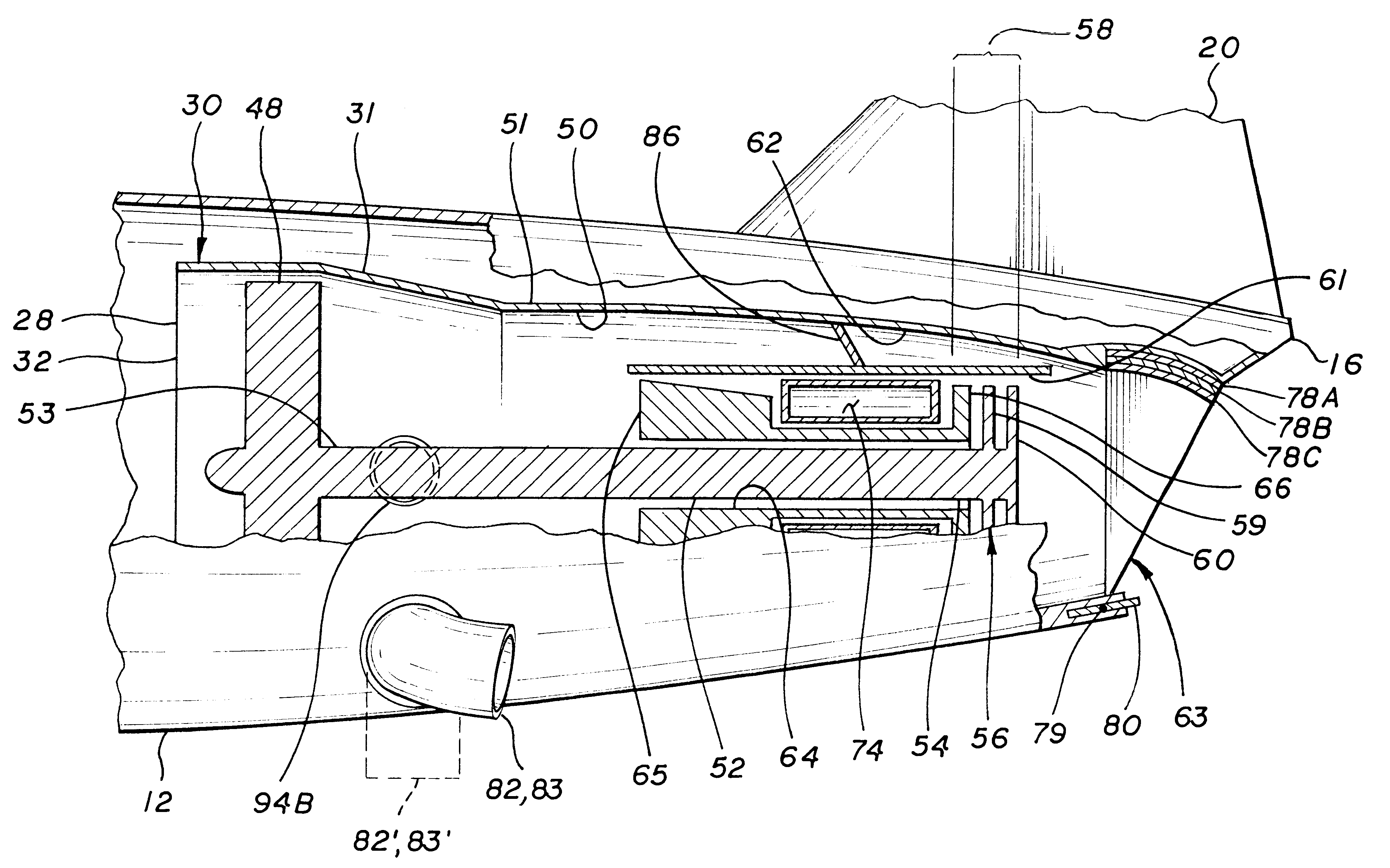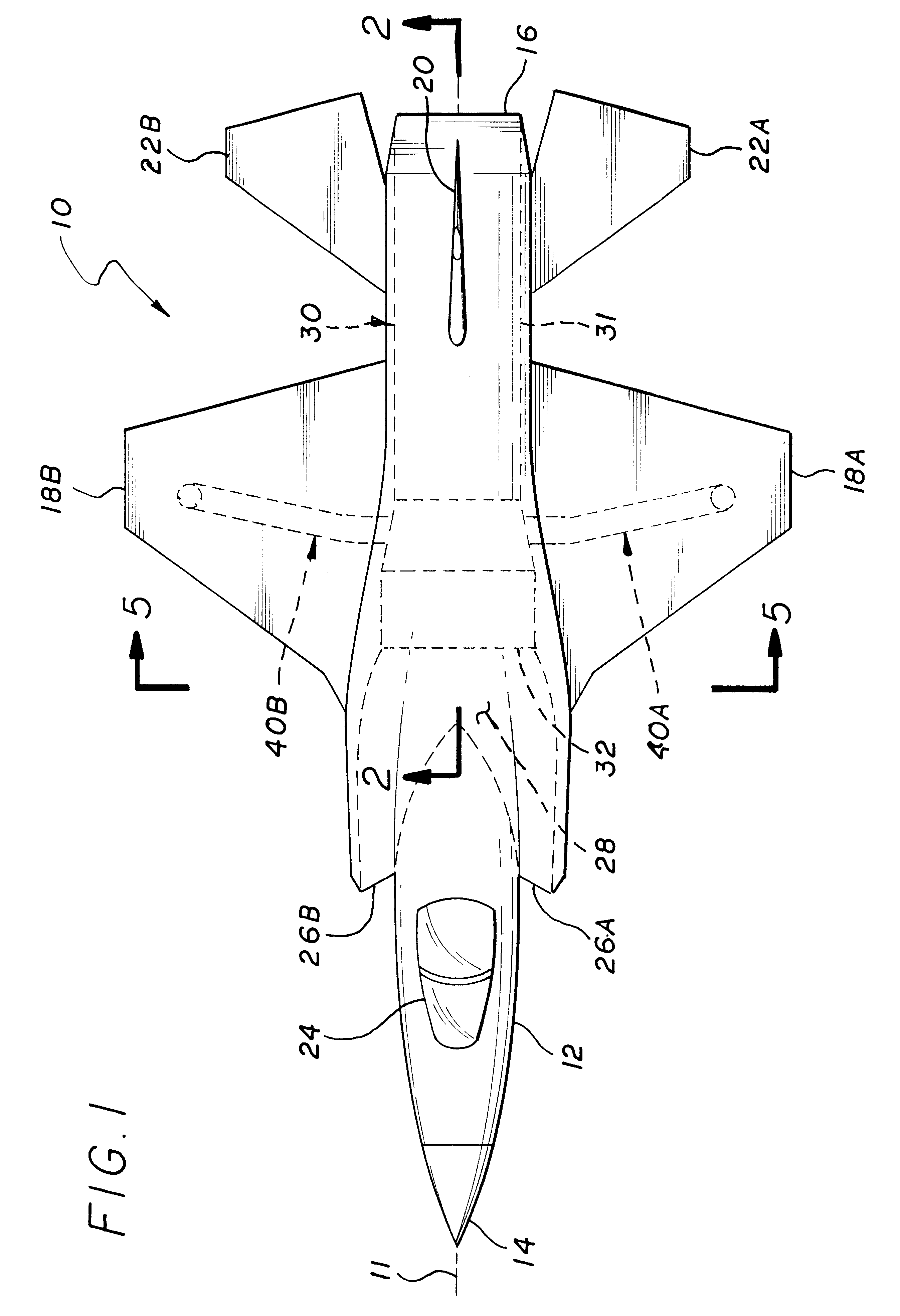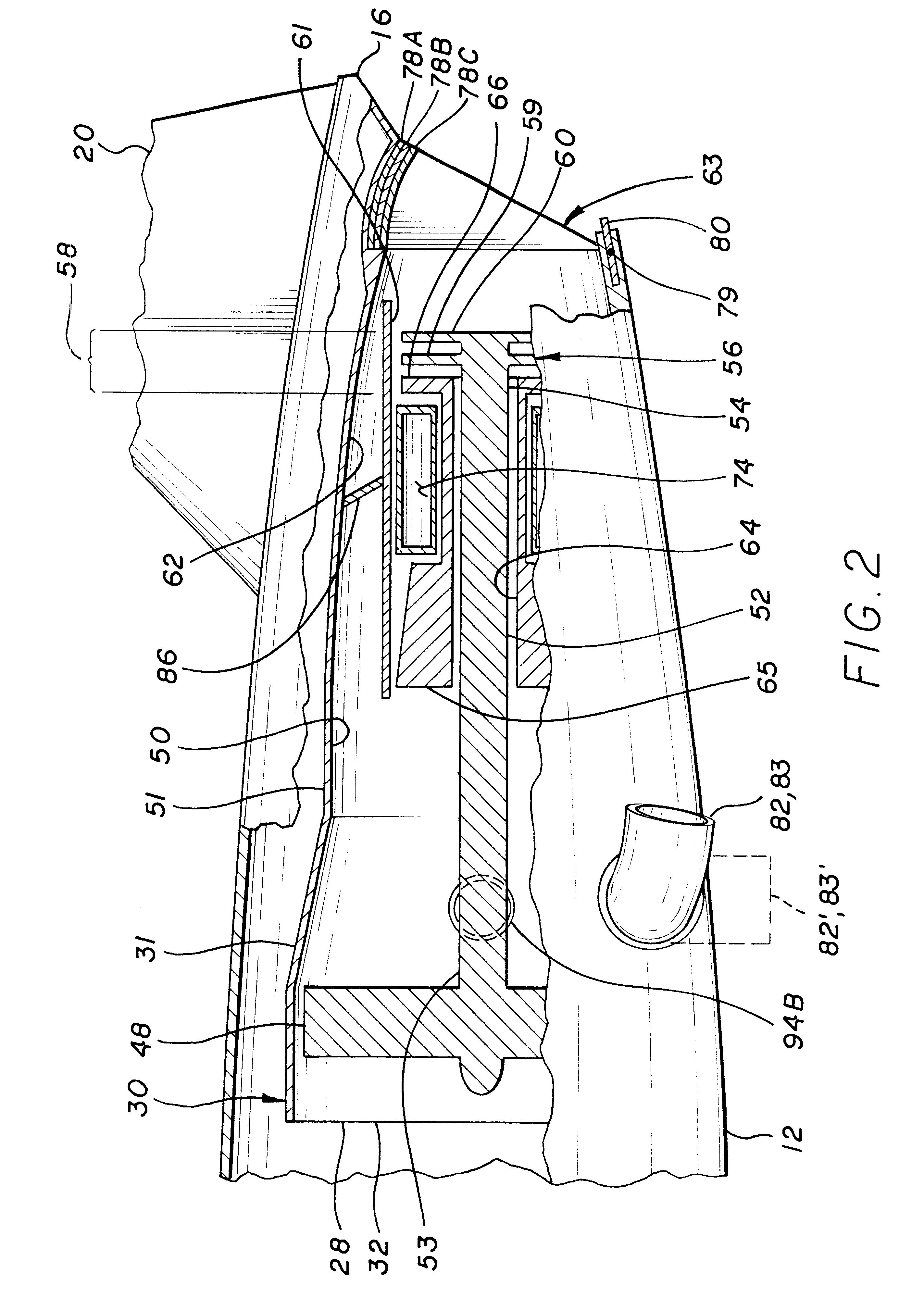Propulsion system for a vertical and short takeoff and landing aircraft
a technology for propellant systems and aircraft, applied in vertical landing/take-off aircraft, aircraft navigation control, machines/engines, etc., can solve the problems of large diameter rotors, limited forward velocity, and compromise of most v/stol aircra
- Summary
- Abstract
- Description
- Claims
- Application Information
AI Technical Summary
Benefits of technology
Problems solved by technology
Method used
Image
Examples
Embodiment Construction
Illustrated in FIG. 1 is a single engine V / STOL type aircraft, generally indicated by numeral 10, having a longitudinal axis 11. The aircraft 10 includes a fuselage 12 with a nose 14, tail 16, wings 18A and 18B, vertical stabilizer 20, and horizontal stabilizers 22A and 22B. Other features include a cockpit 24, engine inlets 26A and 26B, which join to form an engine inlet duct 28. The subject propulsion system, generally indicated by numeral 30, includes a turbofan engine 31 having an inlet 32. Additionally illustrated are roll control assemblies, 40A and 40B, which are coupled to the engine 30 and exit to either side of fuselage 12 on the underside of the wings 18A and 18B, respectively. A further explanation of the function of the roll control nozzle assemblies 40A and 40B will be subsequently provided.
Illustrated in FIG. 2 is a partial cross-sectional view of the aircraft shown in FIG. 1 particularly illustrating the propulsion system 30. As previously stated, the propulsion syst...
PUM
 Login to View More
Login to View More Abstract
Description
Claims
Application Information
 Login to View More
Login to View More - R&D
- Intellectual Property
- Life Sciences
- Materials
- Tech Scout
- Unparalleled Data Quality
- Higher Quality Content
- 60% Fewer Hallucinations
Browse by: Latest US Patents, China's latest patents, Technical Efficacy Thesaurus, Application Domain, Technology Topic, Popular Technical Reports.
© 2025 PatSnap. All rights reserved.Legal|Privacy policy|Modern Slavery Act Transparency Statement|Sitemap|About US| Contact US: help@patsnap.com



